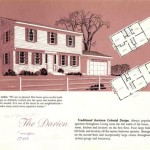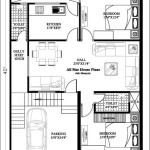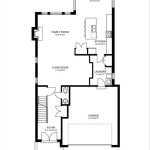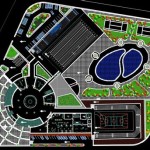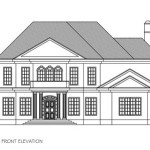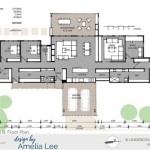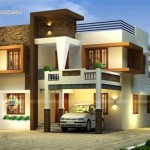Victorian House Plans: A Guide to Architectural Styles and Considerations
Victorian architecture, spanning the reign of Queen Victoria from 1837 to 1901, encompasses a diverse range of styles, each with distinct characteristics. Understanding these nuances is crucial when exploring Victorian house plans. This period saw rapid industrialization and population growth, fueling experimentation and eclecticism in architectural design. The resulting homes offer a blend of ornate details, practical layouts, and historical charm that continues to captivate homeowners today.
Key architectural styles within the Victorian era include Gothic Revival, Italianate, Queen Anne, Second Empire, Stick Style, and Romanesque Revival. Gothic Revival emphasizes pointed arches, steep roofs, and decorative ornamentation inspired by medieval architecture. Italianate houses feature low-pitched roofs, wide eaves with brackets, and tall, narrow windows. Queen Anne designs are known for their asymmetrical shapes, turrets, towers, and decorative gables. Second Empire houses are characterized by mansard roofs and elaborate dormers. Stick Style showcases exposed framing members as decorative elements. Romanesque Revival incorporates rounded arches, massive walls, and often includes towers and turrets.
When selecting Victorian house plans, careful consideration should be given to the specific style and its inherent features. Researching historical examples and architectural details can provide valuable insights. Furthermore, understanding the lifestyle needs of the occupants is essential. While Victorian homes are aesthetically appealing, they require careful planning to ensure functionality for modern living.
Floor plans of Victorian houses typically reflect the social customs of the era. Formal parlors and dining rooms were prominent features designed for entertaining guests. Bedrooms were often located on the upper floors, providing privacy for family members. Kitchens, initially relegated to the back of the house, gradually became more integrated into the main living areas as technology advanced.
Modern adaptations of Victorian house plans offer opportunities to blend historical aesthetics with contemporary conveniences. Open floor plans can create a sense of spaciousness while preserving the architectural integrity of the original design. Updated kitchen layouts with modern appliances can seamlessly integrate into the overall aesthetic. Adding bathrooms and expanding existing ones addresses the needs of modern families. Incorporating energy-efficient features, such as updated insulation and windows, enhances sustainability.
Exterior elements play a significant role in the overall appeal of a Victorian house. Porches, verandas, and balconies add to the charm and provide outdoor living spaces. Intricate woodwork, decorative gables, and ornate trim contribute to the visual richness of the façade. Choosing appropriate exterior paint colors that complement the architectural style enhances the curb appeal. Landscaping should also be considered to create a harmonious transition between the house and its surroundings.
Building a Victorian-style house requires careful attention to detail and craftsmanship. Selecting experienced builders who understand the intricacies of this architectural style is essential. The use of quality materials, such as durable wood siding and historically accurate millwork, ensures the authenticity of the design. Properly installed roofing materials, designed to withstand the elements, protect the structural integrity of the house. Careful attention to interior finishes, such as plasterwork and decorative moldings, completes the Victorian aesthetic.
Adapting Victorian house plans for modern living requires balancing historical accuracy with contemporary needs. Understanding the specific characteristics of each Victorian architectural style is crucial for making informed decisions. Consider the size and layout of the house in relation to the intended use and occupancy. Evaluating the site conditions, such as topography and orientation, influences the placement and design of the house. Local building codes and regulations should be consulted to ensure compliance.
The restoration of existing Victorian houses presents unique opportunities to preserve architectural heritage. Careful assessment of the existing structure is essential to identify areas requiring repair or renovation. Preserving original features, such as stained glass windows and decorative woodwork, maintains the historical integrity of the house. Integrating modern amenities, such as updated plumbing and electrical systems, enhances functionality without compromising the historical character. Consulting with preservation specialists can provide valuable guidance throughout the restoration process.
Budgetary considerations are crucial when undertaking any construction or renovation project, especially with Victorian houses, known for their intricate details. Developing a realistic budget that accounts for all aspects of the project, including materials, labor, and permits, helps manage expenses. Exploring financing options and securing pre-approval for loans provides financial stability throughout the process. Regularly monitoring expenses and adjusting the budget as needed ensures the project stays on track. Contingency planning for unforeseen costs helps avoid financial surprises.
Victorian house plans offer a timeless appeal that continues to resonate with homeowners seeking unique and historically significant architecture. By understanding the nuances of various Victorian styles and carefully considering modern adaptations, individuals can create homes that blend historical charm with contemporary living. Careful planning, attention to detail, and collaboration with experienced professionals ensure the successful realization of a Victorian dream home.

Untitled Victorian House Plans Mansion Floor Plan Homes

Montrose 3363 5 Bedrooms And 4 Baths The House Designers

Vintage Victorian House Plans 1879 Print Plainfield George La Baw F Mansion Floor Plan

Victorian Style House Plan 4 Beds 5 Baths 3574 Sq Ft 410 3612 Houseplans Com

House Plans Victorian Vintage Sims

Luxurious Victorian Home Plan Builder Ready 3225
Victorian House Plans Home Design Gml D 756 19255

The Glen Flora Victorian House Plans Old Vintage

Victorian House Plans Home Design Rg1904 1826

150 Victorian House Designs American Architecture Perspective

